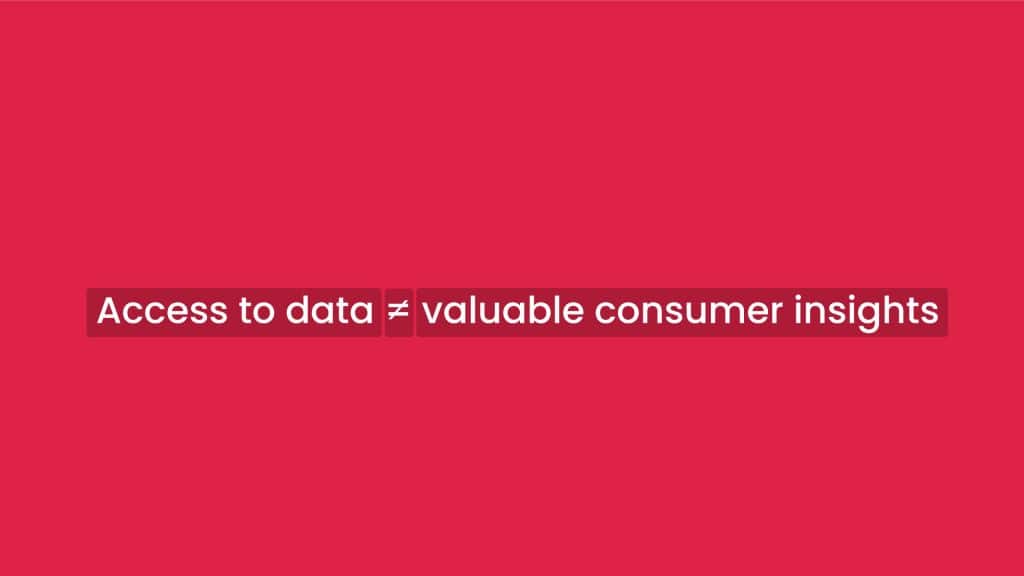Today’s competitive market means that brands these days have a tough job on their hands marketing to their audience. Adding to this is the complex milieu of different generations— Baby boomers, Gen X, Millennials, and Gen Z— each with its own particular needs and wants; which makes targeting the audience, difficult.
And while the process of targeting depends on various factors; which happens alongside your market research; some brands target just one or two of these age groups to match their product or service.
But this may not always be the case, for many companies’ target audience spans across generations, such as everybody’s favorite dessert, Cadbury Dairymilk. This makes it necessary to understand the nuances of each generation, to make your marketing as effective as possible.
Cue ✨ consumer insight✨
What is it? This is the interpretation of consumer behaviors that helps businesses understand how their target audience thinks, feels, and engages with their brand. This helps them identify the marketing communications and channels that vibe resonate the best with their target audiences.
And while we live in the age of the internet today, having access to a vast amount of data doesn’t necessarily translate into generating valuable consumer insights.

It is the deeper research into this data that helps brands leverage a unique advantage over their competition! This entails analysis and interpretation of human behavior and trends, to provide qualitative and 360 ̊ views of your audiences that help improve the effectiveness of your targeted marketing efforts.
Alright then, let’s take you through some easy tips for using consumer insights to improve your paid campaigns:
- Identify and target— your audience
Marketing is all about constant orientation around the targeted customer. What this means is that you are more likely to find success if you appeal to specific personas within your audience over appealing to *every* type of consumer.
Asking key questions is your answer here. These will help you zero in on your customer personas, and can sound like this:
- How old is someone?
- What is their occupation?
- Where do they live?
- What device do they use?
- What are their spending habits?
This is a highly specific process, where questions need to be tailored and tweaked according to your specific service or product.
- Schedule, schedule, and schedule
Making hay when the sun shines is a sound business strategy we are strong proponents of. In terms of consumer insights, this looks like this:
- Slating your PPC ads at the times when a majority of users are searching for your business.
- Adjusting the schedule to correlate to whenever there are spikes in searches.
- Investing more in your advertisements at peak periods to generate the optimum amount of traffic.
Sidebar: Season well

(Gif credit- https://tenor.com/view/salty-salt-bae-gif-7529894)
A continuation of the above point, if your good or service is especially relevant or in demand near a certain holiday, season, or event, then consider redirecting your resources for that timeframe. Save money meanwhile, if you’re not closely affiliated with the special occasion until the bid price drops 😛
- Tailor your messages: Match the step, and catch the emotion
Tailored messages are a proven remedy for matching your developed persona’s goals, desires, and pain points. With a staggering 91% of consumers saying they are more likely to shop with brands that provide offers and recommendations that are relevant to them, you can see just why.
Specific messaging helps you reach your audience with material that, again, resonates with them strongly. This can broadly be understood as success-based, fear-based, or empathy-based.
But guess what? There are a plethora of other emotions to tap into. And since we are a largely intuitive lot, there’s a common reaction to when these emotions are invoked.
This knowledge can be fruitful for businesses to build on and prune their advertising accordingly.
- Use A/B testing
AB testing in marketing is similar to a clothes shop person showing different variations of their clothes for the customers to choose from. But instead of going directly into the market, this happens before unveiling your product and services— in ghost mode— to gain much-needed consumer insights.
How? By creating many versions of a single marketing element and measuring how they fare. In ghost mode.
This helps preserve your resources and can be used not just on your website or ads but in marketing emails as well.
To conclude, consumer insight research is crucial to keep up and thrive in the ever-competitive world. It will help you create targeted and relevant communication that resonates with your consumers.
A data-driven, methodological approach to understanding the consumers is just what every brand needs to get its finger on the pulse of its target audience. It will help you create highly effective and engaging search engine marketing campaigns, that make your audience feels heard and cared for while driving home the leads for you. A perfect win-win 🙂
